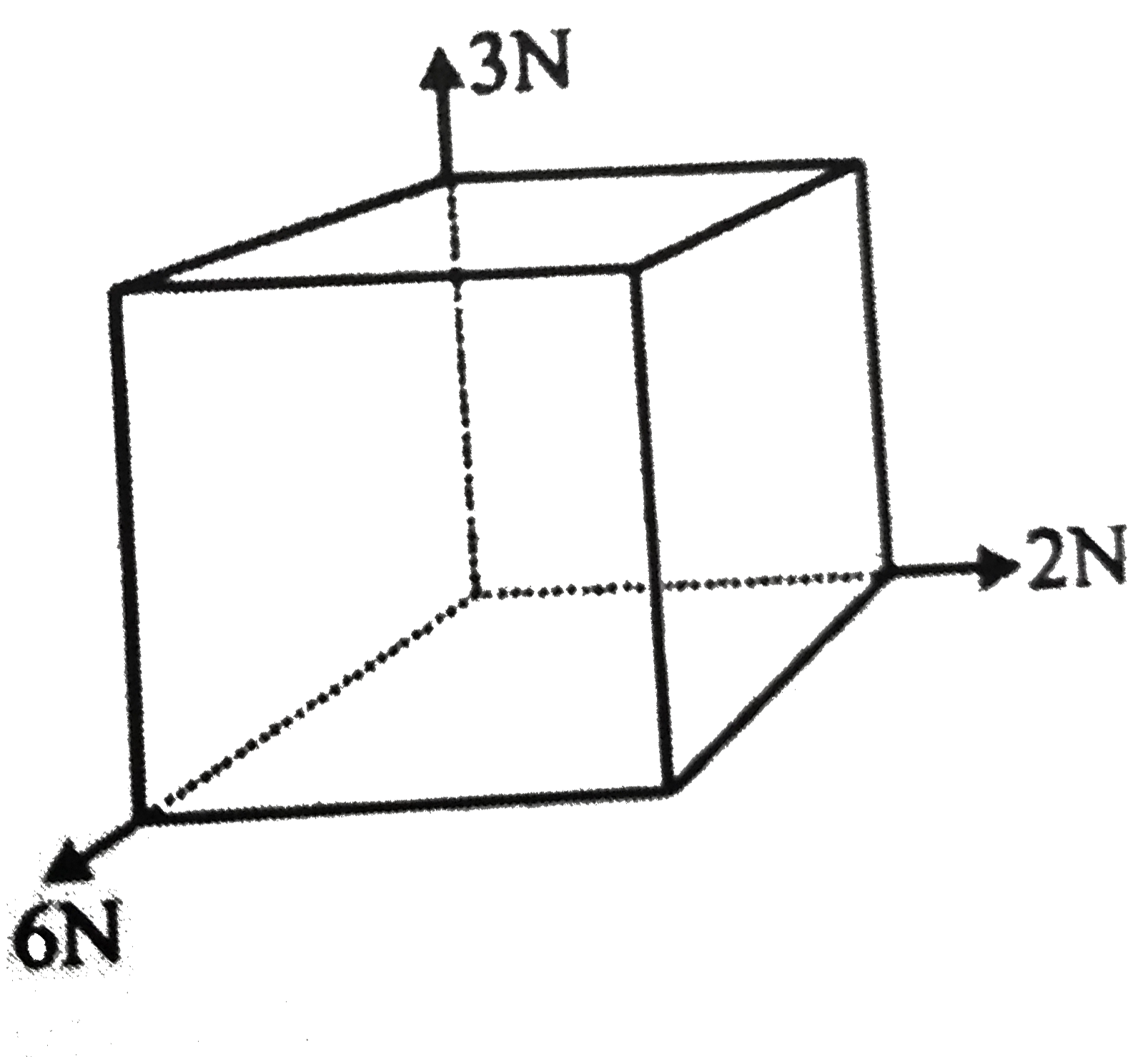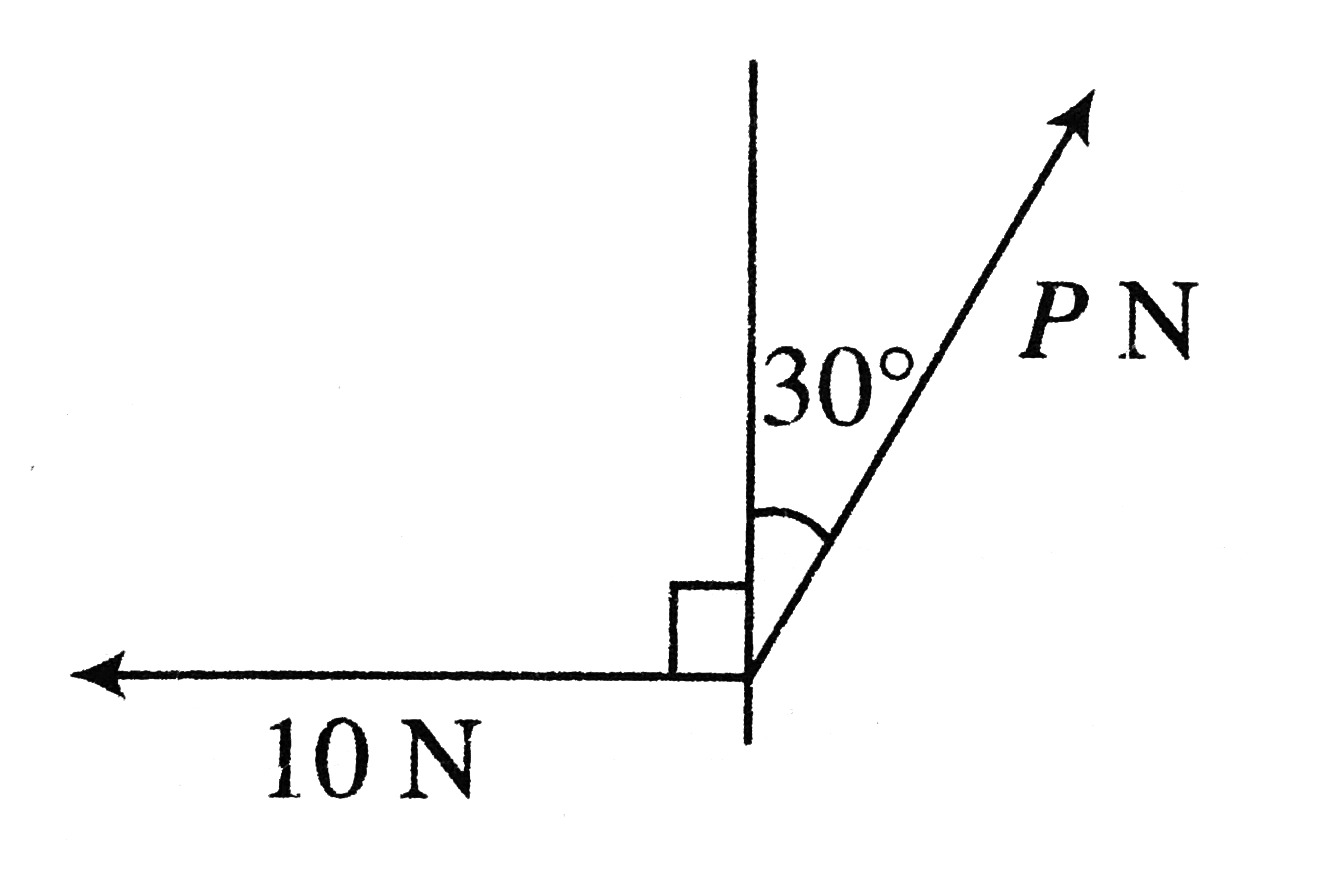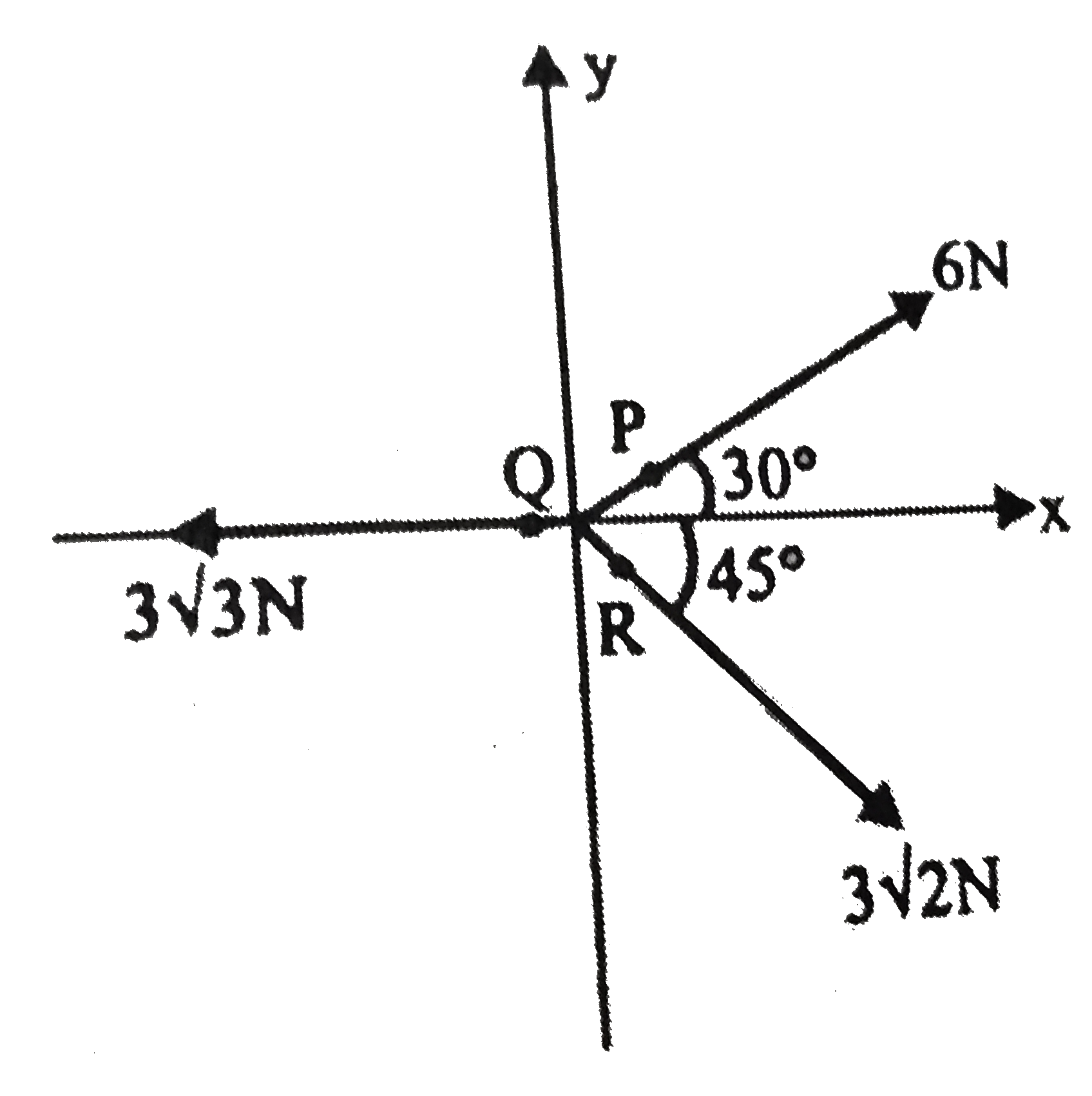Four forces of magnitude P, 2P, 3P and 4P act along the four sides of a square ABCD in cyclic order. Use the vector method to find the magnitude of resultant force.
The correct Answer is:2√2P,225∘
Step by step video, text & image solution for Four forces of magnitude P, 2P, 3P and 4P act along the four sides of a square ABCD in cyclic order. Use the vector method to find the magnitude of resultant force. by Physics experts to help you in doubts & scoring excellent marks in Class 11 exams.
Topper's Solved these Questions
Similar Questions
Four forces of magnitudes P,2P,3Pand4P act along the four sides of a square ABCD in cyclic order.Use the vector method to find the resultant force.
View SolutionThree forces of magnitudes 2N, 3N and 6N act at corners of a cube along three sides as shown in figure. Find the resultant of these forces in N.
 View Solution
View Solution
Knowledge Check
- Question 1 - Select One
If forces of magnitudes P, Q and R act at a point parallel to the sides BC, CA and AB respectively of a triangle ABC, the magnitude of their resultant is
A√(P2+Q2+R2)B√(P2+Q2+R2−2QRcosA−2RPcosB−2PQcosC)CP+Q+RDnone - Question 2 - Select One
Forces proportional to AB, BC and 2CA act along the sides of triangle ABC in order, their resultants represented in magnitude and direction is
ACABACCBCDCB - Question 3 - Select One
Forces proportional to AB, BC & 2 CA act along the sides of triangle ABC in order, their resultant represented in magnitude and direction as:
ACABACCBCDCB
Three equla force, each of magnitude P, act along the side AB, BC, and CA of a trangle. Calculate the resultant force.
View SolutionTwo horizontal forces of magnitudes of 10N and PN act on a particle. The force of magnitude 10N acts due west and the force of magnitude PN acts on a bearing of 30∘ east of north as shown in (figure) The resultant of these two force acts due north. Find the magnitude of the resultant.
 View Solution
View SolutionThree ant P,Q and R are pulling a grain with forces of magnitude 6N,3√3N and 3√2N as shown in the figure. Find the magnitude of resultant force (in N ) acting on the grain .
 View Solution
View SolutionThe greatest & the least magnitude of the resultant of two forces of constant magnitudes are P & Q respectively. If the forces act at an angle 2α, then prove that the magnitude of their resultant is given by √P2cos2α+Q2sin2α.
View SolutionThree forces of magnitude 30, 60 and P acting at a point are in equilibrium. If the angle between the first two is 60∘, the value of P is
View Solution

